4 Steps toward Number Sequence Automaticity
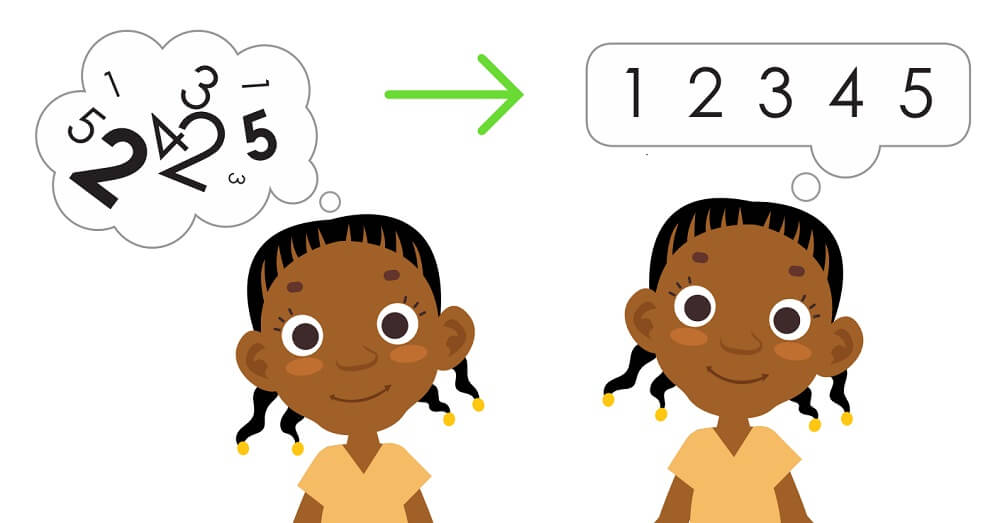
Just because young learners can say number names doesn’t mean they know number sequence! To best prepare your students for counting and other more advanced skills, help them understand and automate sequencing in a variety of realistic settings.
In this post, we’ll give you strategies for teaching the sequence of numbers 1-5 and show you how to apply these ideas in the classroom (corresponding Common Core Standards: K.CC.A.1, K.CC.B.4.A, K.CC.B.4.B)!
All of the exercises mentioned here are part of the HappyNumbers.com course and are presented along with exercises using other representations.
Prior knowledge
To help those kindergarteners who are still learning number recognition, take a small step back to our post How to Teach Number Permanence or When Is a 3 Not a 3?
Step 1 – Number sequence using objects
Start by displaying five uniform objects horizontally. Demonstrate how to match one number to each object, one through five. Say each number as you place it in sequence. Then, have students match each number, in order, to the objects (our program uses bus stops). You can get them started by placing the 1 and having them continue the number sequence from there.

Notice that we also call the fifth stop “stop number 5.” This introduces the concept of nominality, or the idea that each object is named based on its number in sequence.
Once students demonstrate the ability to sequence based on your prompting (placing the 1 for them), have them complete the entire sequence on their own. Be sure to have them say each number aloud as they work.
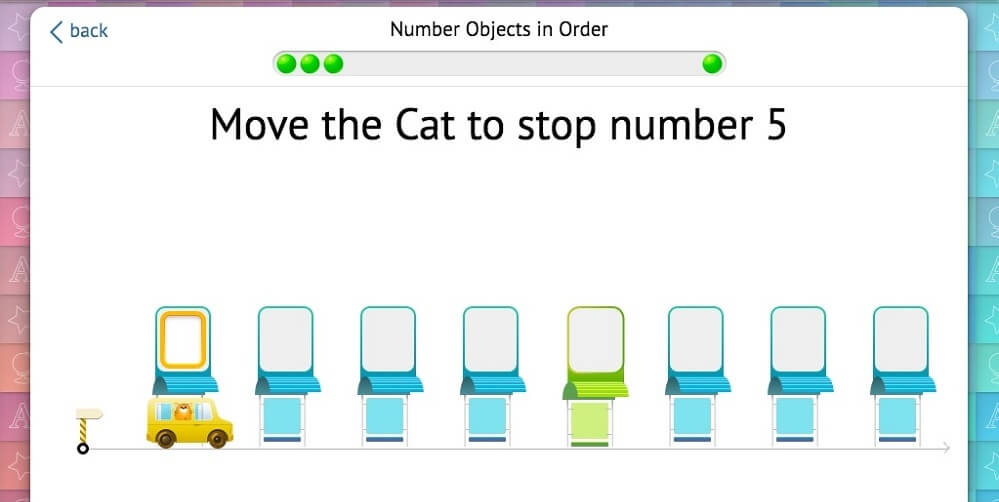
There’s a lot more to this simple sequencing activity than meets the eye! Students build familiarity with the digits 1-5. They interact with numbers visually and perhaps also orally and auditorily. They strengthen their understanding of the count sequence and one-to-one matching numbers to objects. This activity also reinforces the progression of numbers along a horizontal plane from left to right.
It’s important to provide students with immediate feedback during this activity. On the Happy Numbers website, an incorrect answer is supported with a hint, helping student to solve the problem.

Step 2 – Number sequence on a number line
Use of a number line is an important part of any math curriculum, which you can read more about in our post How to Teach Early Numeracy using Number Line.
Before changing the task, add complexity by changing the environment. Here, we use the same fill-in-the-blank approach in a more abstract setting – the number line. We suggest starting with just numbers 1-5, but working within the context of a 0 to 10 number line.

Students learn that each “jump” forward on the number line represents a count of one in sequence. Offline, they can practice this skill similarly to the previous one, using a printed number line instead of concrete objects.
To provide scaffolding, start by providing numbers 1-4 and having students place the 5. Then, back down to providing 1-3 and have students place 4 and 5, and so on. As always, turn any error into an immediate teaching opportunity. On Happy Numbers, we use the familiar red text along with a prompt.
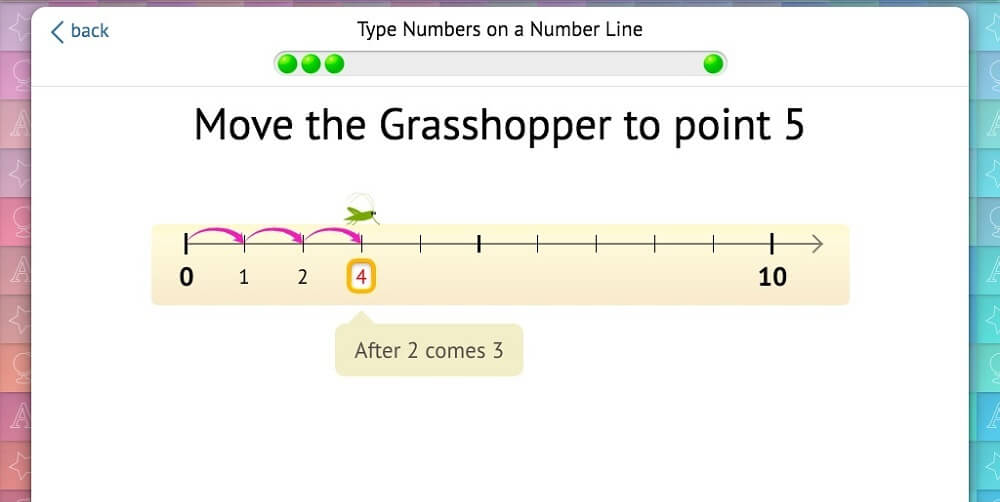
Step 3 – Align numbered objects
Previously, students had matched numbers to objects or positions in a fill-in-the-blank task. Here, all objects are numbered and students must move them into sequential order. Actual train cars work well for this activity.
Introduce the task by presenting scattered objects that are already in sequence and have students align them.
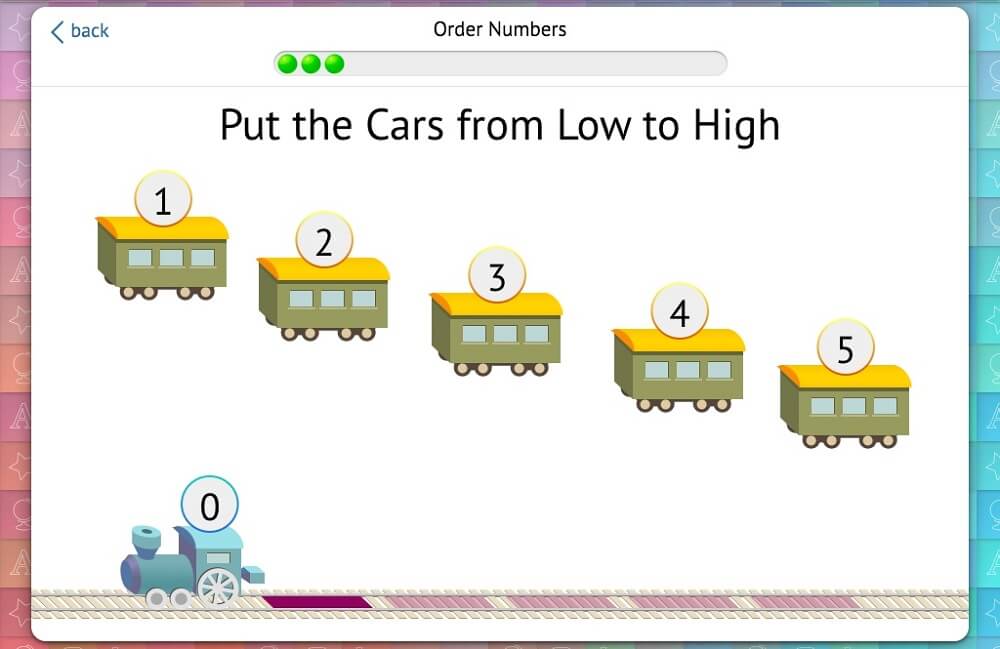
Next, shuffle the objects and have students order them from low to high. You may need to start them off with object 1 on the left and indicate the progression to the right.
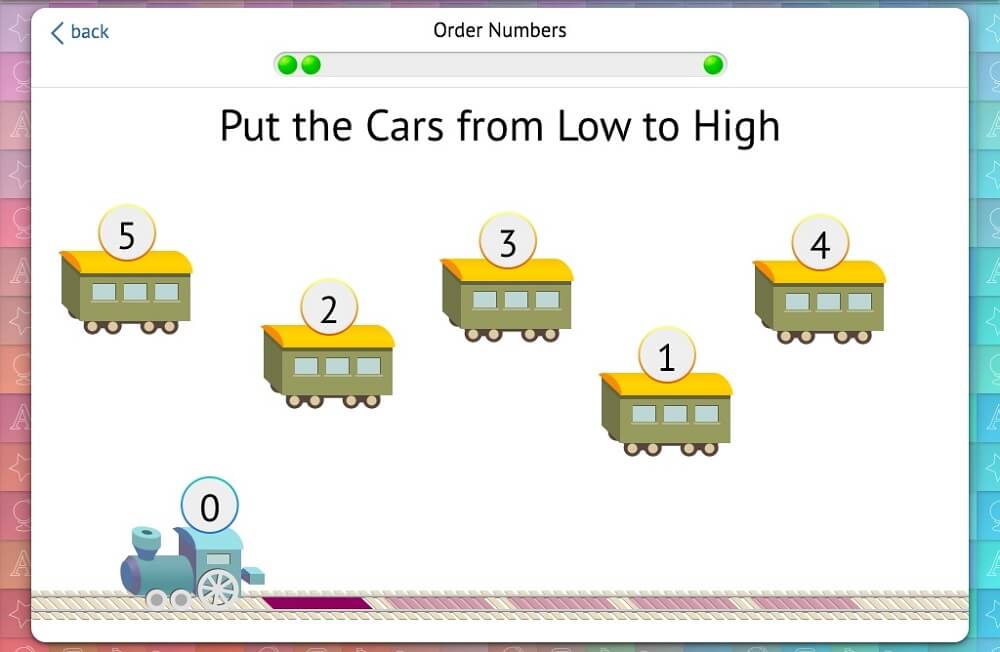
As you can imagine, you can use other kinds of manipulatives, like counting bears. Just add a numbered sticker to each one.
Step 4 – From sequencing to flexible thinking
Return to the familiar number line to try a new approach to number sequencing. Instead of identifying each number in order, students now identify individual numbers in the sequence. Using a number line numbered 1-10, place a small sticky note over one of the numbers 1-5. Have students identify the missing number based on its neighbors. Here’s what this activity looks like on Happy Numbers:
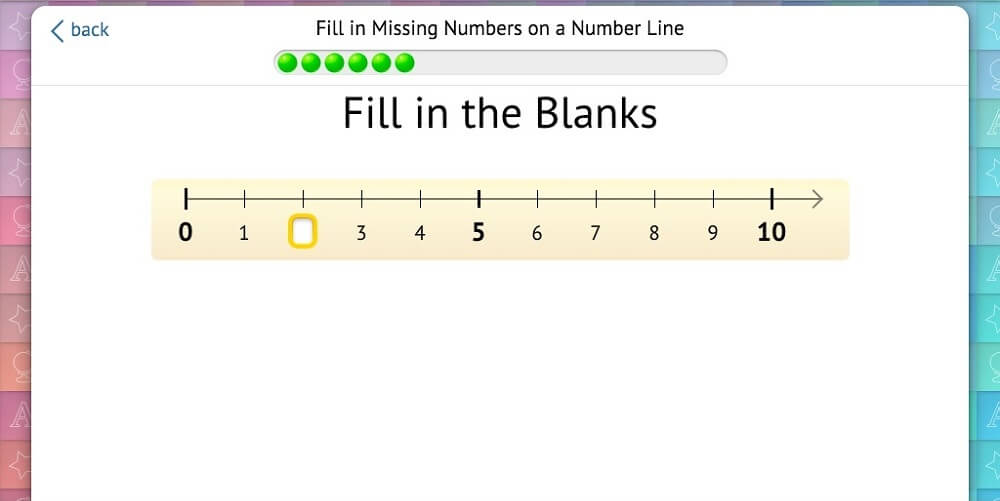
Once students are comfortable identifying one missing number, try presenting the number line with two missing numbers.

How can you get started with these strategies?
In a class full of kindergarteners, it can be time-consuming to prepare manipulatives and near-impossible to monitor every individual response.
Our online exercises follow these carefully-scaffolded steps, providing immediate feedback and allowing students to work at a pace that’s right for them. While students use HappyNumbers.com on PCs, tablets, or ipads, you’ll be free to work with small groups or individuals. The exercises shown above can be found in our kindergarten Module 1: Numbers to 10.
Yours,
Evgeny & Happy Numbers Team
P.S.: Questions or comments about this lesson or about Happy Numbers? Just shoot us an email at em@happynumbers.com and we’ll be sure to get back to you!
